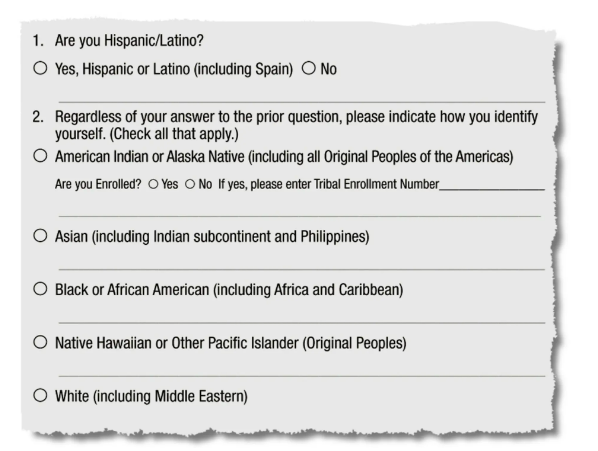
2011年通用应用程序的详细信息。
我们每天发表一篇文章,以表彰第四届年度学生社论大赛的前 10 名获奖者。
下面是Matteo Wong的文章,16岁。
The Asian Misnomer: What the Affirmative Action Debate Misses
One Scantron bubble and five letters: “Asian.” That’s all the College Board needs to encompass the heritage of thousands of students and 48 countries. Those five letters are also what many college admissions officers use as the basis for establishing diversity through affirmative action. While some institutions provide options such as “Chinese,” “Asian Indian” and “Other Asian,” a glance at official demographics reports shows that they don’t actually care; all of these ethnicities are still homogenized as Asian.
Proponents of affirmative action commonly argue that diversity improves critical thinking, creativity and race relations. Colleges like Caltech, which admitted 42 percent Asians in 2016, are then doing a disservice to their students by not exposing them to a variety of perspectives. This train of thought assumes that all “Asians” have similar cultural values, namely prioritizing academic achievement and exam scores.
Painting all Asians with the brush of the model minority — assimilatory and successful — is not only false, but dangerous. Though 72 percent of Indian-Americans and 53 percent of Chinese-Americans have a college degree, Hmong-, Laotian-, and Cambodian-Americans drop out of high school at rates approaching 40 percent. Grouping Muslim- and Chinese-Americans makes them both appear well-adjusted on paper, but in person Muslims are faced with severe xenophobia. Even if Chinese- and Indian-Americans have an unfair advantage in college admissions, lumping all Asians with them causes underprivileged Asian subgroups to not receive the attention and government services they need.
More shockingly, Bangladesh, Myanmar and China are not the same place; progressive Americans seem to think Democrats and Republicans have different countries of origin, yet they assume Muslim-, Burmese-, and Chinese-Americans all live in Confucian homes and celebrate Chinese New Year.
In fact, the Muslims in Bangladesh celebrate Eid, in Myanmar people throw water during Thingyan, and neither country places a heavy emphasis on Confucian values; do not conflate Asian with Chinese. Asia encompasses a series of rich, complex cultures, and claiming a high concentration of Asians will destroy on-campus diversity is not only false, but erases the unique perspectives offered by Asian students.
Promoting racial diversity is undoubtedly important to college campuses, but the definition of diversity is flawed. Asians are not a monolith, and should not be treated as such; schools should actively recognize all 48 linguistic groups currently encompassed by “Asian.” This is not to single out Chinese students as the problem, but rather to remedy affirmative action’s unfair discrimination against disadvantaged Asian subgroups. Understanding the intricacies of “Asian America” would allow college admissions officers to create richer on-campus diversity, while simultaneously granting visibility, and potentially economic or social aid, to underrepresented “Asians.”
Works Cited
Chang H, Sharon. “The Growing Poverty Crisis That Everyone Is Ignoring.” ThinkProgress. 27 Sep. 2015.
Saulny, Susan and Steinberg, Jacques. “On College Forms, a Question of Race, or Races, Can Perplex.” The New York Times. 13 June 2011
Bollinger, Lee C. “Affirmative Action Isn’t Just a Legal Issue. It’s Also a Historical One.” The New York Times. 24 June 2016.
Progress 2050. “Who Are Asian Americans?” 28 April 2015.
Office of the Registrar. “Fall Enrollment 2016-17.” Caltech. N.d.
Ramakrishnan, Karthick. “National Origin Data Would be Helpful in Understanding Asian-Americans.” 16 Oct. 2015.